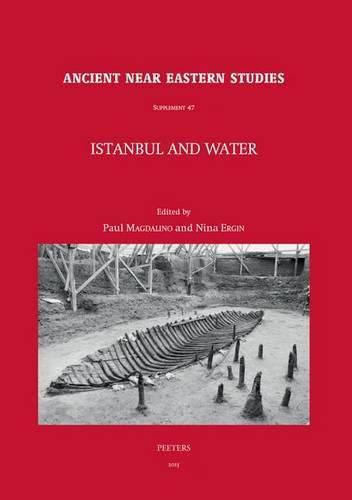Readings Newsletter
Become a Readings Member to make your shopping experience even easier.
Sign in or sign up for free!
You’re not far away from qualifying for FREE standard shipping within Australia
You’ve qualified for FREE standard shipping within Australia
The cart is loading…






Istanbul stands at a unique conjunction of an inland sea with a long
maritime inlet, and a winding, turbulent maritime strait that links two
seas and separates two continents. These topographical features have
greatly facilitated maritime trade, for which the city has had an
enormous harbor capacity. Istanbul’s relationship with fresh water is
also idiosyncratic: its dearth meant that fresh water for consumption
had to be channeled, stored, and distributed with the help of
long-distance aqueducts, open-air reservoirs and cisterns. The natural
environment combined with the norms of local societies created a culture
of water that has constituted an important part of Istanbul’s identity.
Various aspects of it are explored in this volume, the outcome of a
symposium organized by Koc University’s Research Center for Anatolian
Civilizations. The eleven essays by leading scholars present research
findings from the archaeological excavations at Yenikapi, examine the
distribution and consumption of water in Byzantine times as well as the
social impact of water in the Ottoman era, and offer reflections on the
aesthetics of water.
$9.00 standard shipping within Australia
FREE standard shipping within Australia for orders over $100.00
Express & International shipping calculated at checkout
Istanbul stands at a unique conjunction of an inland sea with a long
maritime inlet, and a winding, turbulent maritime strait that links two
seas and separates two continents. These topographical features have
greatly facilitated maritime trade, for which the city has had an
enormous harbor capacity. Istanbul’s relationship with fresh water is
also idiosyncratic: its dearth meant that fresh water for consumption
had to be channeled, stored, and distributed with the help of
long-distance aqueducts, open-air reservoirs and cisterns. The natural
environment combined with the norms of local societies created a culture
of water that has constituted an important part of Istanbul’s identity.
Various aspects of it are explored in this volume, the outcome of a
symposium organized by Koc University’s Research Center for Anatolian
Civilizations. The eleven essays by leading scholars present research
findings from the archaeological excavations at Yenikapi, examine the
distribution and consumption of water in Byzantine times as well as the
social impact of water in the Ottoman era, and offer reflections on the
aesthetics of water.